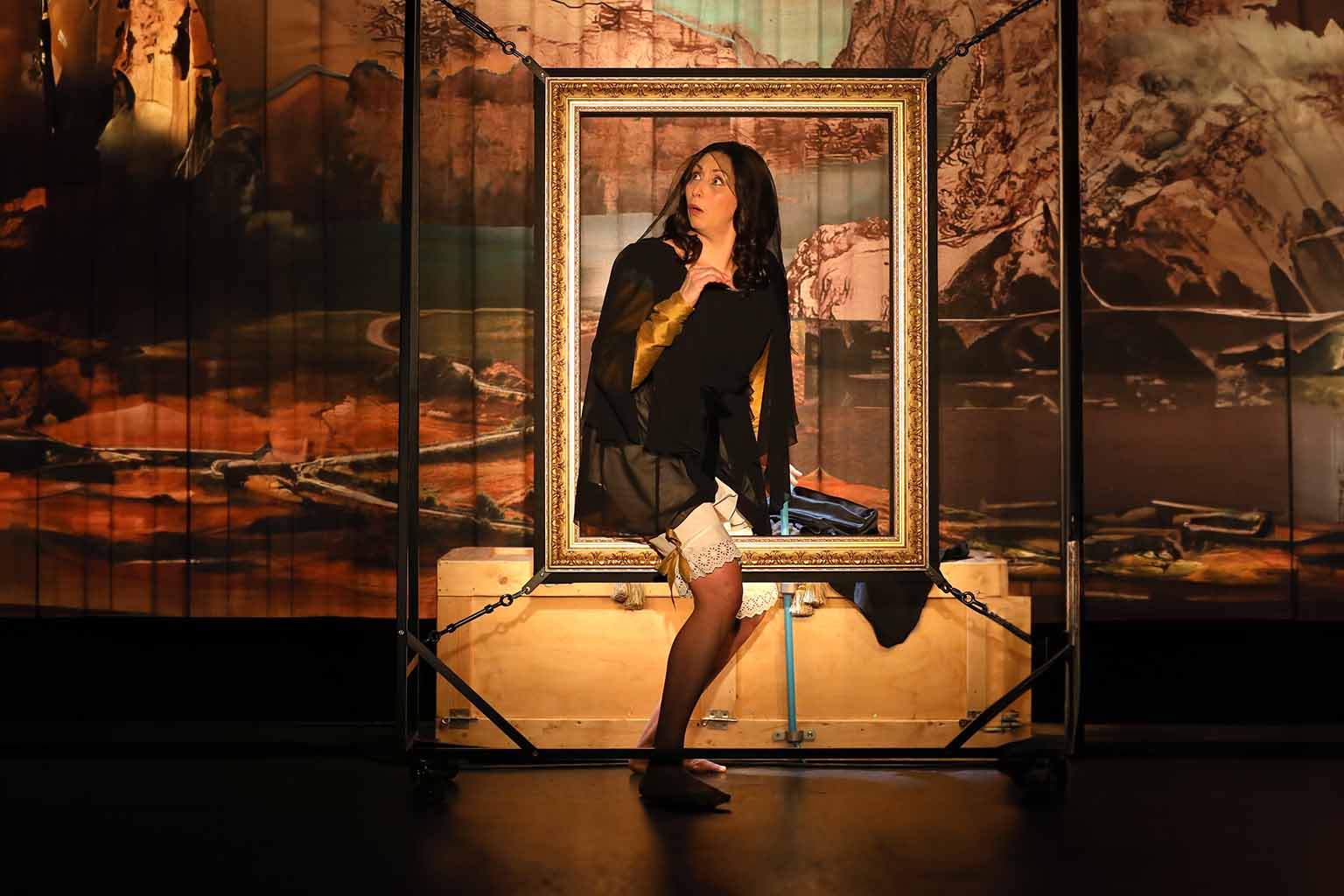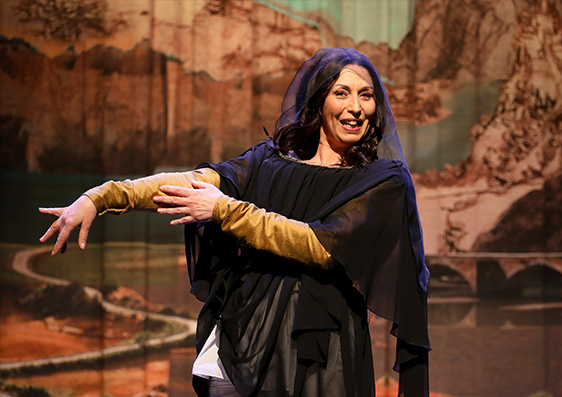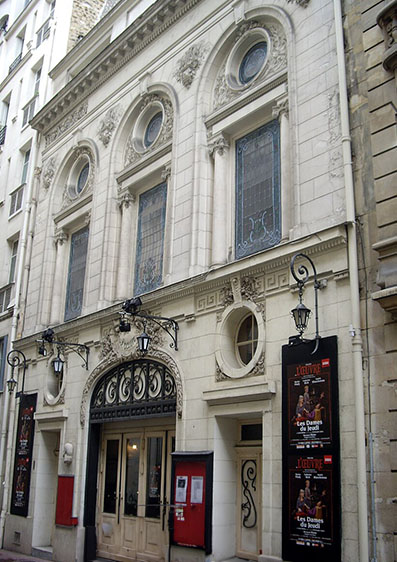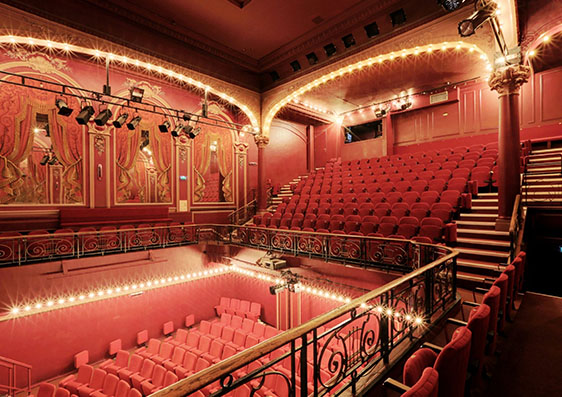La Joconde parle enfin

Location
55 rue de Clichy, 75009 Paris
Capacity 336 seats
Duration
1 h 10
No intermission
Details
Classic Theatre
For all audiences
In French
Highlights: La Joconde parle enfin
Story: La Joconde parle enfin
Reviews
Théâtre de l'Œuvre
History and Fun Facts about Theatre de l’Œuvre
The Théâtre de l'Œuvre is an iconic cultural venue buried within the heart of the French capital, nestled in Paris’ 9th arrondissement. Founded in 1893 by theatrical visionary Aurélien-Marie Lugné (known as ‘Lugné-Poe’), this venue proved to be the catalyst for a major artistic revolution in the world of theatre.
From the beginning, the Théâtre de l'Œuvre set itself apart from the crowd by staging avant-garde works and welcoming innovative playwrights such as Nordic talents Maurice Maeterlinck, August Strindberg, and Henrik Ibsen, and young Frenchmen like Alfred Jarry, Henry Bataille, and Henri de Régnier. The theatre played a crucial role in the emergence of Symbolism and Surrealism, playing a significant role in shaping the theatrical landscape of the early 20th century.
The venue’s stellar architecture, as designed by Belgian architect Henry van de Velde, is a work of art in itself. With its singular façade and intimate interior, it is an invitation to all to enjoy an evening of theatre in ultimate style. The small size of the auditorium cultivates a closeness and sense of intimacy between the actors and the audience, making for a unique viewing experience that highlights the social aspect of the art form.
Over the decades, the Théâtre de l'Œuvre has continued to evolve, remaining true to its tradition of dedicating itself to the pursuit and creation of innovative theatre. From contemporary plays to revisited classics, the theatre remains a veritable pearl of the Parisian theatre scene, wherein creativity and the celebration of all things thespian flourish.
Today, the Théâtre de l'Œuvre offers plays guaranteed to amaze every spectator, such as the unique piece ‘Kaddish pour l'enfant qui ne naîtra pas’ (meaning Kaddish for the Child Who Will Not Be Born) inspired by the novel of the same name by Imre Kertész, The Bitter Tears of Petra von Kant by Rainer Werner Fassbinder, The Reformer by Thomas Bernhard, Dispersion by Harold Pinter, Autumn Sonata by Ingmar Bergman, as well as a selection of plays that are more light-hearted in subject. Come and discover this top-quality programme, as improved by a host of incredibly talented actors!
Fast facts Capacity: 336 Handicap Accessible: Yes, please let us know by email at hello@theatreinparis.com so that the theatre can welcome you in the best possible conditions. Please note: electric wheelchairs cannot enter the theatre. Air conditioning: No Heating: Yes Coat Check: Yes (paid service)
FAQ
How do I get to the Théâtre de l'Œuvre in the 9th arrondissement of Paris?
The Théâtre de l'Œuvre is accessible by: Metro lines: The theatre is accessible by the Metro lines 13 or 2, which run until the Metro stations Place de Clichy or Liège. Bus lines: The theatre is accessible by the bus lines 30, 68, 74, 81, or 95, which run until the stations Blanche - Calais or Bucarest. In case of difficulty, our hotline can be reached during our business hours. Please see the footer of this page for our contact details.
What do I do when I get to the Théâtre de l'Œuvre?
How long does the theatre piece, La Joconde parle enfin, last?
La Joconde parle enfin lasts approximately 1 hour and 10 minutes, with no intermission.
Can I take photos during the performance of La Joconde parle enfin?
It says that La Joconde parle enfin is in French with no surtitles. Is it still accessible to English speakers?
Where can I find the seating plan for the theatre?
Is there a dress code at Théâtre de l'Œuvre?
There is no specific dress code at Théâtre de l'Œuvre, but proper attire is appreciated. Many Parisians will arrive directly from work, dressed in business casual or chic attire.
Is there a coat check available at the Théâtre de l’Œuvre?
Is tipping customary at Théâtre de l'Œuvre in Paris?
Tips are not mandatory in many Parisian theatres. However, ushers will usually appreciate a small tip of between €2 and €5, which you can give them when they’ve shown you to your seat. Fun fact: the French word for “tip” is “pourboire”, which literally translates to “to have a drink”.
If I'm late, will I still be allowed into the show?
Yes, but there is no guarantee of placement in the chosen category. Out of respect for the artist, the theatre will not allow placement in the orchestra after the show has began. Anyone with Orchcestra tickets will be placed directly in the balcony. The theatre will accept latecomers as long as they still have seats in the balcony.
How do I know if my seats are next to each other?
Tickets of the same category that are booked during the same purchase session in the same booking order on our website are always assigned side by side. To be sure of this, make sure all of your tickets are in the same category and are included in your shopping cart at the time of purchase.
If there are no available adjacent seating arrangements, our customer service team will contact you before the booking is confirmed.
Is the Théâtre de l'Œuvre handicap-accessible?
Please note that there are 5 steps up to the theatre lobby, with no alternative access provided. If they are able, individuals in wheelchairs are asked to either walk the few steps, or ask the staff present to lift the wheelchair. If you require accessibility options, please contact us at hello@theatreinparis.com once you have finished booking so that we can inform the theatre and ensure you receive the best possible welcome.










..jpg)